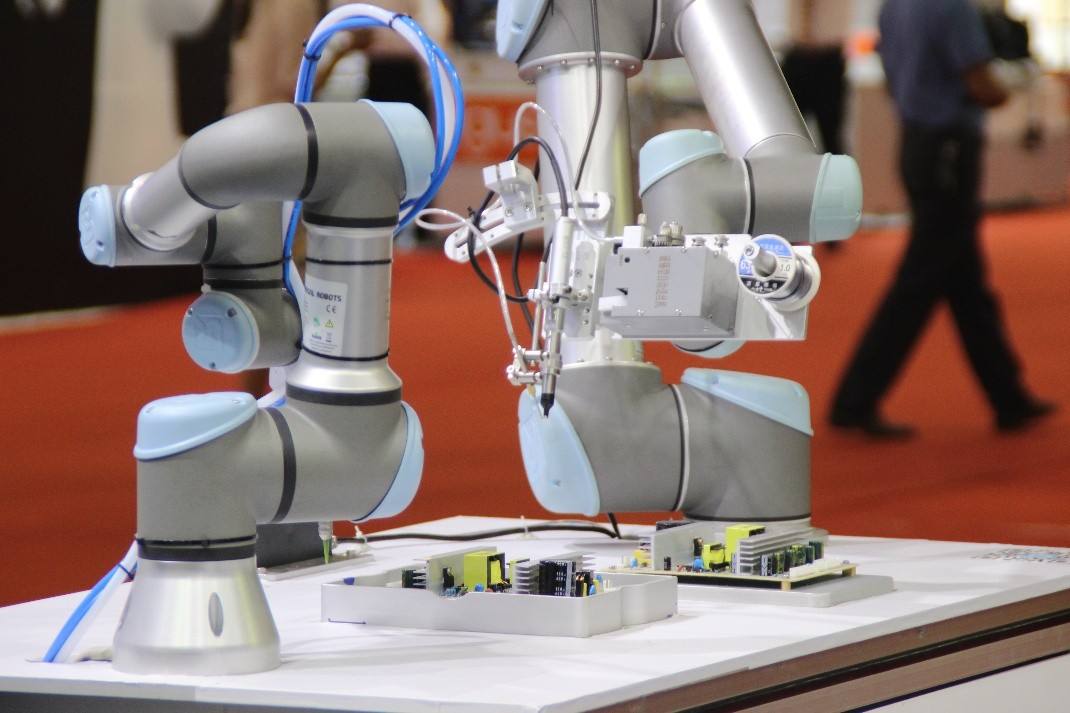Industrial Cooperative robot, also known as man-machine cooperative robot, is different from the traditional industrial robot, which must be isolated from people with a safety fence. It can cooperate and interact with people in a common workspace to complete the work together. Therefore, cooperative robots must have high security, high flexibility and high precision, and meet the characteristics of plug and play, simple and intuitive programming and simple operation, so that non professionals can quickly grasp and use them.
Traditional industrial applications: many traditional applications benefit from cooperative robots that can repeat operations and complete heavy manual labor, such as assembly, loading / unloading, packaging, sorting, distribution, grinding and polishing applications. With the increasing adoption of robots in enterprises of all sizes, robots are no longer only used by large industrial manufacturers. With today’s collaborative technology, many machine manufacturers find that the return on investment is as short as less than one year. In addition to the benefits of reducing labor costs and improving product productivity, these robots can also support factories to reduce the size of assembly lines and cooperate directly with their operators. Finally, some cooperative robots can work in complex human environment without installing large external sensors and barriers. This can support the plant to deploy, remove robots or deploy manpower as required by the current working environment. This enables the flexibility required by a large number of multi variety and small batch manufacturing facilities.
Complex and dangerous applications: cooperative and complex sensing robots can not only cooperate around the operator, but also support operations in complex and dangerous applications where it is difficult to deploy traditional robots. In applications such as spraying or removing paint from large ships, operators are often exposed to a variety of hazards, including chemicals and falling from height. Now, robots can be deployed to do this without the overly complex task of installing guides, tracks or sensors on ships. Another application is disaster recovery robots, which deploy robots to perform tasks in strange and steep terrain.
Warehousing and logistics: in some applications, we found that large organizations use automation equipment, and now smaller organizations can use automation equipment with the help of more intelligent and convenient collaborative robots. Automated guided vehicles (AGVS) have been used in the warehousing and logistics industry for many years, but traditionally, large facilities need to be invested to support the operation of these vehicles. The new navigation technology supports the operation of AGVs in warehouses or factories without the use of reflectors or markers. In addition to the new navigation technology, an emerging technology has been developed by combining mobile robots and articulated robots. This combination presents an exciting new opportunity to manipulate robots around facilities and to pick and package products through robots when working in a human environment.
Surgical application: reducing risk, shortening operation time and recovery time are still the focus of surgical robot. By improving the technology of routine laparoscopy and arthroscopy, the surgical robot can provide surgeons with higher visibility, agility, accuracy and comfort while working safely in the operating room and patients. Today’s surgical robots can reduce surgical trauma, improve patient efficacy, and shorten the postoperative hospital stay of patients undergoing prostate, heart, gynecological and other operations. With the development of new surgery, the increase of global demand and the continuous innovation of collaborative technology, the development potential of surgical robot is unlimited.
Remote security and monitoring: finally, cooperative robots will bring an exciting opportunity in the field of remote security and monitoring. This application combines a variety of different technologies, including mobile robots, sensing and video surveillance. Opportunities for these robots include national borders and other large open areas, such as farms, solar power plants, warehouses, airport parking lots or military bases.
Cooperative robots do not need external security barriers. With the increasing number of such robots deployed, more and more applications benefit from them. Today, we have seen the obvious benefits of collaborative robots to industrial settings, complex / dangerous applications, warehousing and logistics, as well as safety and monitoring.


